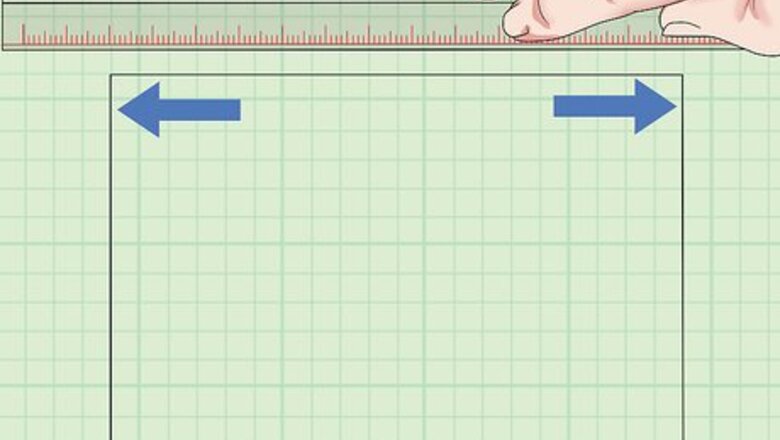
views
Determining Square Inches in a Square or Rectangle
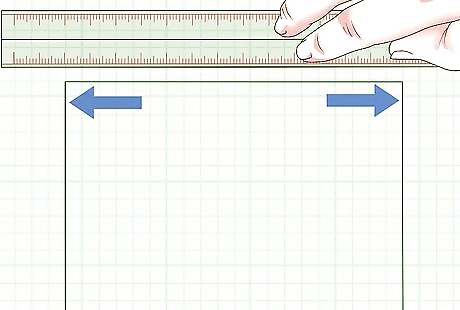
Determine the length of the area to be measured. Squares and rectangles have four straight sides - in the case of rectangles, opposite sides have equal lengths, while in the case of squares, all four sides are equal. Measure any one of the square or rectangle's sides to find a value for length.
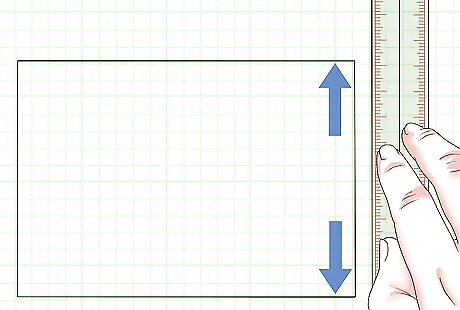
Determine the width of the area to be measured. Next, measure either of the sides that touch the side whose length you just measured. This side should meet the first side at a 90 degree angle. This second measurement is your square or rectangle's width. Since all four of a square’s sides are equal, the "length" measure you obtain for a square will be identical to the "width" measurement. In this case, you only need to measure one side.
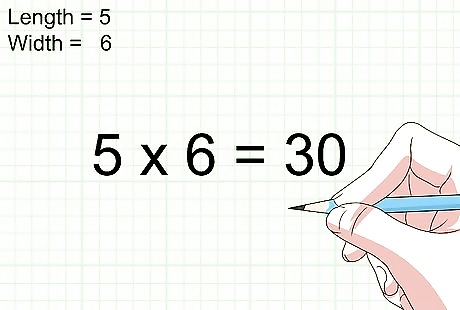
Multiply length × width. Simply multiply your measurements for length and width to determine the area of your square or rectangular area in square inches. For example, let's say that, for a rectangular area, you measure a length of 4 inches and a width of 3 inches. In this case, the area within your rectangle is 4 × 3 = 12 square inches. In the case of squares, since all four sides are the same, you can simply take the measurement of one side and multiply it by itself (also called "squaring" it or taking it to the second power) to get a square inches value for area.
Determining Square Inches in Other Shapes
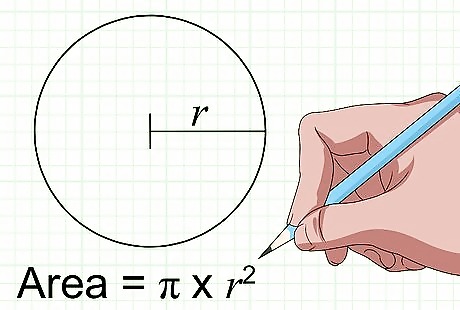
Find the area of a circle with the equation Area = pi × r. To find the area of a circle in square inches, all you need to know is the distance from the center of the circle to its edge in inches. This distance is called the circle's radius. Once you find this number, simply substitute it for "r" in the equation above. Multiply it by itself, then multiply it by the mathematical constant pi (3.1415926...) to determine the square inches within the circle. So, a circle with a radius of 4 inches would have an area of 50.27 square inches, as this is the product of 3.14 x 16.
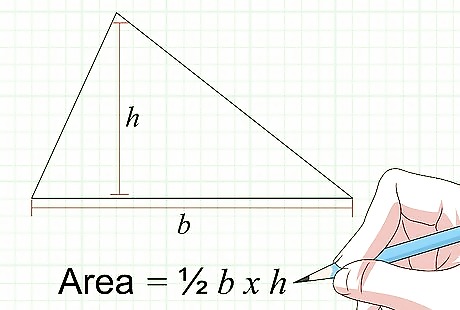
Find the area of a triangle with the equation Area = 1/2 b × h. The area of a triangle in square inches is found by multiplying its base ("b") by its height ("h"), with both measurements in inches. A triangle's base is simply the length of one of its sides, while its height is the distance from the "base" side to the opposite corner when measured at a 90 degree angle from the "base" side. The area of a triangle can be calculated using base and height measurement for any of its three sides and the opposite corner. Therefore, if you choose a base side with a length of 4 inches, and the corresponding height is 3 inches, your result will be 2 x 3 = 6 square inches.

Find the area of a parallelogram with the equation Area = b × h. Parallelograms are similar to rectangles, the only difference being that their corners don't necessarily meet at 90 degree angles. Appropriately, the way to calculate a parallelogram's area in square inches is similar to the way to calculate a rectangle's - simply multiply a parallelogram's base by its height with both measurements in inches. Its base is the length of one of its sides, while its height is the distance from the opposite side to the first side when measured at a right angle. Thus, if the length of a chosen side is 5 inches, and the height is 4 inches, the resulting area will be 5 x 4 = 20 square inches.

Find the area of a trapezoid with the equation Area = 1/2 × h × (B+b). A trapezoid is a four-sided shape with one set of parallel sides and one set of non-parallel sides. To calculate its area in square inches, you must take three measurements (in inches): The length of the longer parallel side ("B"), the length of the shorter parallel side ("b"), and the trapezoid's height ("h") - the distance between the two parallel sides, measured at a right angle. Add the lengths of the two sides together, multiply that by the height, then halve the result to find the trapezoid's area in square inches. So, if the long side of your trapezoid is 6 inches, the short side is 4 inches, and the height is 5 inches, the result is ½ x 5 x (6+4) = 25 square inches.
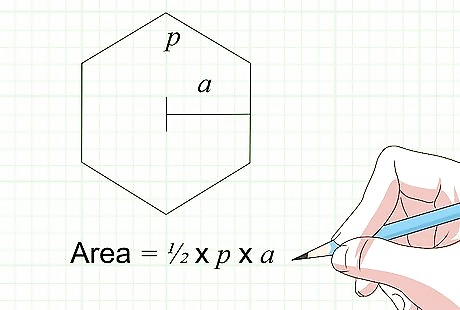
Find the area of a hexagon with the equation Area = ½ × P × a. This formula works for any regular hexagon, which means it has 6 equal sides and 6 equal angles. P represents the perimeter, or 6 times the length of one side (6 x s) for a regular hexagon. a represents the apothem — the length from the center of the hexagon to the midpoint of any one side (that is, halfway between any 2 angles). Multiply these and halve the result to determine the area. Thus, if your hexagon has 6 equal sides of 4 inches each (which means P = 6 x 4 = 24) and an apothem of 3.5 inches, the calculation is ½ x 24 x 3.5 = 42 square inches.

Find the area of an octagon with the equation Area = 2a² × (1 + √2). For a regular octagon (which has 8 equal sides and 8 equal angles), you only need to know the length of one side (“a” in the formula) to determine the area. Plug that measurement into the formula and you’ll have your result. Therefore, if your regular octagon has a side length of 4 inches, you would calculate 2(16) x (1 + 1.4) = 32 x 2.4 = 76.8 square inches.
Making Conversions to Square Inches
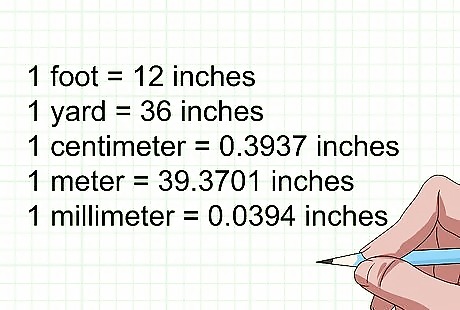
Convert your measurements to inches before making calculations. To get your final answer in square inches, it’s easiest to provide any measurements required for the formula (such as length, height, or apothem) in inches. So, if the sides of your square are 1 foot each, convert that to 12 inches before making the area calculation. Here are conversion factors for common units of measurement: 1 foot = 12 inches 1 yard = 36 inches 1 centimeter = 0.3937 inches 1 meter = 39.3701 inches 1 millimeter = 0.0394 inches

Multiply by 144 to convert from square feet to square inches. 1 square foot is literally 1 foot squared (or 1 foot times 1 foot); this means it is also 12 inches times 12 inches, or 144 square inches. So, if you have an area in square feet, simply multiply it by 144 to determine the area in square inches. For example, 400 square feet = 400 x 144 = 57600 square inches.
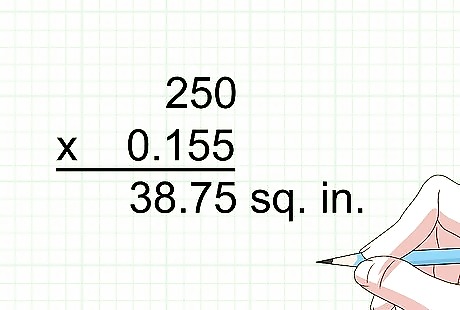
Multiply by 0.155 to convert from square centimeters to square inches. 1 centimeter equals roughly 0.394 inches, and 0.394 squared (0.394 x 0.394) equals 0.155. Thus, if you need to convert a result of 250 square centimeters, multiply 250 times 0.155 to get 38.75 square inches. Also, 1 square meter equals 10,000 square centimeters, and one square kilometer equals 10,000,000,000 square centimeters. So, one square kilometer = 10,000,000,000 square centimeters x 0.155 = 1,550,003,100 square inches.



















Comments
0 comment